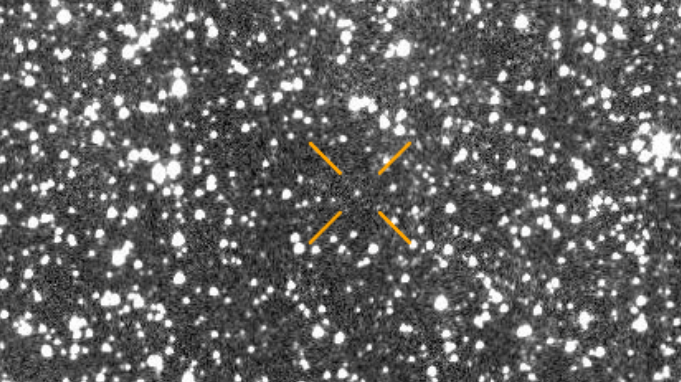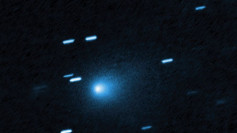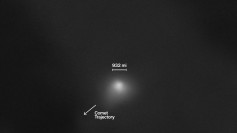The interstellar object 3I/ATLAS-only the third known visitor to enter our solar system from beyond-has surprised astronomers again, this time with a sudden, unexplained acceleration near the sun that some researchers say challenges current scientific models. Harvard astrophysicist Avi Loeb believes the anomaly could be a clue that the object is not natural at all.
Loeb, director of the Institute for Theory and Computation at Harvard University, wrote in Medium that "3I/ATLAS displayed the first evidence of a nongravitational acceleration" as it passed its perihelion, or closest approach to the sun, at a distance of 1.36 astronomical units. He said the acceleration was recorded at "135 kilometers per day squared away from the sun" and "60 kilometers per day squared transverse to the sun's direction."
"If we do not observe a dense cloud of gas around it in December, then cometary evaporation is not the explanation of its nongravitational acceleration," Loeb said. "Instead, it might constitute a technological signature of a propulsion system."
His comments have reignited debate over whether 3I/ATLAS-a Manhattan-sized object detected in July-is a natural comet or something artificial. Loeb, who has previously argued that 2017's interstellar object 'Oumuamua could have been alien in origin, told Newsweek that 3I/ATLAS "should have lost at least 10 percent of its mass" to produce the acceleration through normal outgassing. He added that "we should see a dense cloud of gas around it in November and December."
Most experts disagree with Loeb's hypothesis. Darryl Seligman, a physics and astronomy professor at Michigan State University, said comets "have nongravitational accelerations all the time." He explained that comets are "actively losing material," which creates small "rocket-like recoils that make nongravitational accelerations." He added that the effect "is almost strange to imagine a comet without a nongravitational acceleration."
Other astronomers, such as Megan Schwamb of Queen's University Belfast, said the phenomenon can be attributed to natural sublimation processes. "If there is an increase in the rate of volatile ices that are sublimating off the surface of the comet, then the 3I/ATLAS would be observed to be speeding up," she said. Schwamb added that the data collected so far shows 3I/ATLAS is "consistent with having a natural origin" and that "there is no evidence to date to point toward 3I/ATLAS being an alien spacecraft."
Meanwhile, a new study by Qicheng Zhang of Lowell Observatory and Karl Battams of the U.S. Naval Research Laboratory has revealed that 3I/ATLAS brightened at a rate "far exceeding that of most Oort Cloud comets." In a paper posted to the arXiv preprint server, they noted, "The reason for 3I's rapid brightening, which far exceeds the brightening rate of most Oort cloud comets at similar r [radial distance], remains unclear."
Observations from NASA's STEREO and SOHO spacecraft, as well as the GOES-19 weather satellite, confirmed the unusual brightening as the object neared the sun. The researchers proposed that "oddities in nucleus properties like composition, shape, or structure-which might have been acquired from its host system or over its long interstellar journey-may likewise contribute."
Loeb has said ESA's JUICE spacecraft could detect further changes in early November, while ground-based telescopes will have another viewing window in mid-December when the comet passes within 203 million kilometers of Earth. "Scientific truth is not decided by authority or popularity but by attention to data," Loeb said.






